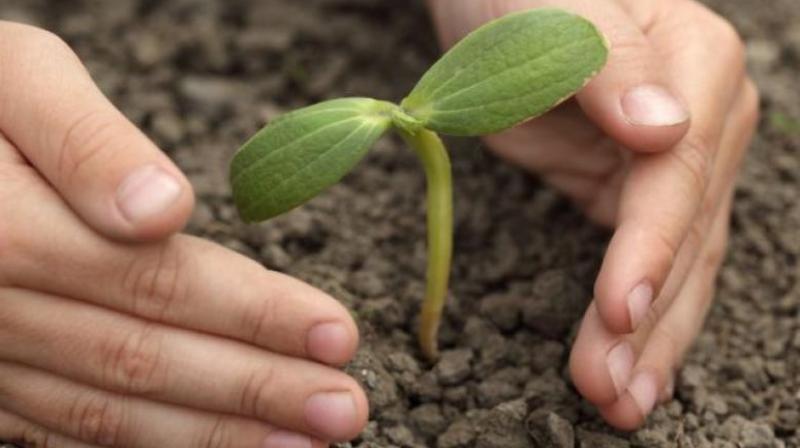Of art and music: Miraculous effect of music on plants

We are aware of the history of Indian music; there are stories of musical seers, who created miracles by the use of vocal and instrumental music. We have heard of the story of Shri Muthuswamy Dikshithar, one of the Carnatic music trinity, singing ‘Amirthavarshini raaga’, when dark clouds began to gather and soon there was a downpour of rain. As a result of an interesting experiment, made recently by two landlords of a village in Thanjavur district on their plantain grove, it has been proved that melodious music does have a beneficial effect on the growth of plants. It has been proved, that it is not mere water and manure that help the agriculturists to reap a bumper harvest and that trees too, seem to respond to good music.
Some time ago, a noted professor, propounded a new but amazing theory, that plants, readily reacted to musical sounds and showed how by playing ‘Nathaswaram’ in the fields, the paddy plants grew better and yielded more, than the controlled plants. According to the professor, the high frequency sound waves produced by musical vibrations bombarded the plant cells and agitated the sensitive protoplasm and nucleus contained in the cell and this process altered the plants normal customary growth pattern.
The researchers have been able to excite marigold plants by means of Bharathanatyam daily for 15 minutes, very early in the morning from a distance of six feet. Due to this influence of Bharathanatyam, the experimental plants had grown latter, by about 60 per cent, besides blooming, about a fortnight earlier, than the controlled plants. The violin Maestro Rajamanikam Pillai, once observed that from his personal experience and from the result of recent research, he was convincingly led to believe that music made a profound effect on the growth on plants.
He had said in one of his articles that he used to practice on his Violin in his gardens many times a day; and after some time he found that the coconut trees near his lands, which were once given up as useless, not only revived but also became healthy. Mr Pillai again observes that music sung daily in the ‘Sampradaya’ way, namely from ‘Bauli Raaga’ in the early hours of the day, followed by ragas like ‘Bilahari’, ‘Dhanyasi’, ‘Devagandhari’, ‘Kalyani’, ‘Mukhari’ etc., might have a greater influence on plants.
For making ‘Mridangams’ and ‘Kanjairas’, the late Dhakshinamurthy Pillai in his days used to select wood from jack trees found in temples, since it produced completely different ‘naadam’, as compared with the wood of jack trees from outside. The peculiarity may be due to the effect of the incessant and daily playing of ‘Nadaswaram’, on trees, inside the temple. It can also be softly asserted that sound rays transmitted, through the earth have a potent influence, on the growth of plants and trees.
(The writer is a well known music critic who has won awards both in India and abroad for propagation of classical arts and music)

